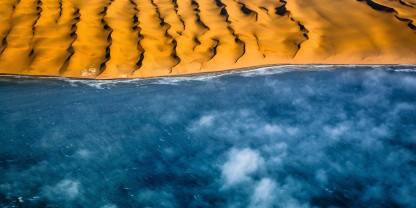Average Expert Rating
Rating Breakdown
Write a User ReviewCape Fur Seal Colonies on the Skeleton Coast
This very remote wilderness area stretches out over 500km of coastline. Because of the nature of this harsh, barren desert environment, big game is scarce, but desert-adapted wildlife like gemsbok and springbok can be spotted. If you’re lucky, you might come across a jackal or brown hyena scavenging on a dead seal. Cape fur seals are abundant along this stretch of coast. They live in colonies and the most accessible one is at Cape Cross, south of the park’s border. I can watch these funny creatures for hours. There is never a dull moment with mothers suckling their babies, males fighting for territory and youngsters playing together. Don’t let the stench put you off; you get used to it after a while.
Less Is More
For those in search of a taste of the wilderness, those looking to escape the crowds, the Skeleton Coast is perfect. Elephants are an unlikely inhabitant of this barren, desert-like corner of Namibia, and lion, rhino, cheetah and hyena are also present, though on my visit I saw little other than sand, sea and, of course, seals at the Cape Cross Seal Colony. This didn’t make for a disappointing trip though. For me, the Skeleton Coast’s appeal lies in its bleak beauty, sounds of the lapping Atlantic ocean and nighttime panoramas at full moon, when you can see almost as far as in the daylight hours. Truly spectacular.
Bleak Beauty
Further south, the Cape Cross Seal Colony is an extraordinary sight of up to 200,000 Cape seals huddled
Read more
together jostling for space. It’s an extraordinary smell too, like rotting fish and guano, the kind of smell that sticks to you and needs washing off in the shower immediately after you’ve left the area.Lonely Wasteland
However, if you’re interested in remote landscapes and desert flora and fauna, you may find the Skeleton Coast rather intriguing. A series of dry river gorges score the park, with antelopes and elephants eking out a living here, along with small populations of desert-adapted lions. The bird population is surprisingly varied and the dunes are a good place to look for insects and small reptiles. I

